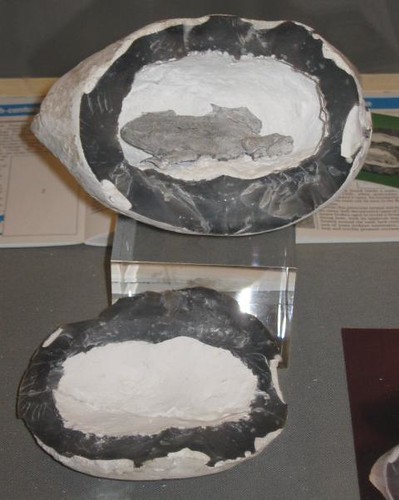This same surprising phenomenon has been reported since the fifteenth century, as many as 210 separate incidents, by some reports.
Examples include a toad extracted from a block of stone by excavators in Hartlepool, England in 1865; a British soldier working in a quarry during WWII who found one inside a slab of rock retrieved from 20 feet underground; and some French workmen who split open a flintstone in 1851 and found a living toad inside a cavity that perfectly matched its body contours.
But these are only a few; many, many similar stories are found throughout the literature.
With so many stories describing nearly the exact same phenomenon, one has to conclude that there must be something to it.
Do frogs indeed have this astonishing ability ?
ASTONISHING CASES
Toad in a stone. In 1761, Ambroise Pare, physician to Henry III of France, related the following account to the Annual Register: "Being at my seat near the village of Meudon, and overlooking a quarryman whom I had sent to break some very large and hard stones, in the middle of one we found a huge toad, full of life and without any visible aperture by which it could get there. The laborer told me it was not the first time he had met with a toad and the like creatures within huge blocks of stone."
Toad in limestone.
In 1865, the Hartlepool Free Press reported that excavators working on a block of magnesium limestone taken from about 25 feet underground near Hartlepool, England, discovered a cavity within the stone that contained a live toad. "The cavity was no larger than its body, and presented the appearance of being a cast of it. The toad's eyes shone with unusual brilliancy, and it was full of vivacity on its liberation. It appeared, when first discovered, desirous to perform the process of respiration, but evidently experienced some difficulty, and the only sign of success consisted of a 'barking' noise, which it continues to make invariably at present on being touched. The toad is in the possession of Mr. S. Horner, the president of the Natural History Society, and continues in as lively a state as when found. On a minute examination of its mouth is found to be completely closed, and the barking noise it makes proceeds from its nostrils. The claws of its fore feet are turned inwards, and its hind ones are of extraordinary length and unlike the present English toad. The toad, when first released, was of a pale colour and not readily distinguished from the stone, but shortly after its colour grew darker until it became a fine olive brown."
Toad in a boulder.
Toad in a boulder.
Around the same time, an article in Scientific American related how a silver miner named Moses Gaines found a toad inside a two-foot diameter boulder. The article stated that the toad was "three inches long and very plump and fat. Its eyes were about the size of a silver cent piece, being much larger than those of toads of the same size as we see every day. They tried to make him hop or jump by touching him with a stick, but he paid no attention."
A later article in Scientific American said: "Many well authenticated stories of the finding of live toads and frogs in solid rock are on record."
A later article in Scientific American said: "Many well authenticated stories of the finding of live toads and frogs in solid rock are on record."
Frog in Geodes
Lizard revives.
In 1821, Tilloch's Philosophical Magazine wrote how David Virtue, a stone mason, was working on a large chunk of rock that had come from about 22 feet below the surface when "he found a lizard embedded in the stone. It was coiled up in a round cavity of its own form, being an exact impression of the animal. It was about an inch and a quarter long, of a brownish yellow color, and had a round head, with bright sparkling projecting eyes. It was apparently dead, but after being about five minutes exposed to the air it showed signs of life. It soon ran about with much celerity."
Toad and lizard in solid rock.
During World War II, a British soldier was working with a team in the quarrying of stone for making roads and filling in bomb craters. They often used explosives to crack open the rock. After one such detonation, the soldier pried a stone slab away from the quarry face when he saw "in a pocket in the rock a large toad and beside it a lizard at least nine inches long. Both these animals were alive, and the amazing thing was that the cavity they were in was at least 20 feet from the top of the quarry face."
Cases of entombed animals remain a mystery. There seems to be no answer to this puzzle unless we are willing to rewrite the science of geology or biology.
Still, it seems the phenomena exists.




No comments:
Post a Comment